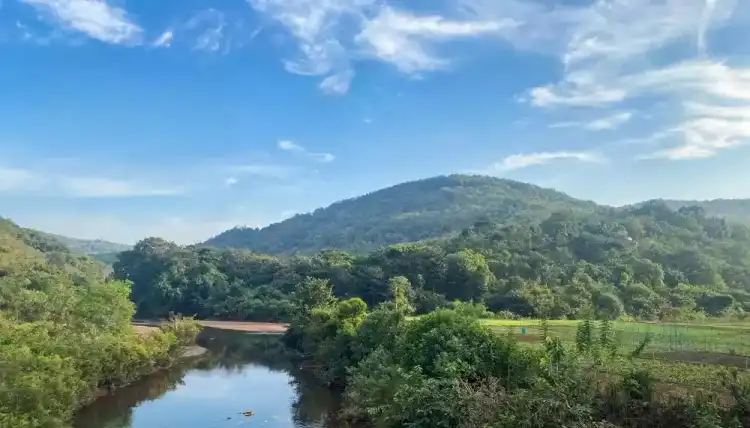Discovering Ratnagiri: A Comprehensive Insight into the District
Introduction to Ratnagiri
Ratnagiri, nestled along the Konkan coast of Maharashtra, India, is a district that embodies a harmonious blend of natural beauty, rich history, and vibrant culture. This region, known for its picturesque landscapes, historical significance, and cultural diversity, is a treasure trove waiting to be explored.
Demography of Ratnagiri
The district of Ratnagiri is home to a diverse population, with a mix of ethnicities and communities that reflect the cultural mosaic of Maharashtra. The predominant languages spoken are Marathi and Konkani, with a significant presence of people from various tribal communities. The demographic composition includes a blend of Hindus, Muslims, Christians, and Buddhists, living together in a tapestry of communal harmony.
Cultural Heritage of Ratnagiri
Festivals and Traditions
Ratnagiri's cultural heritage is deeply rooted in its festivals, traditions, and art forms. Ganesh Chaturthi is celebrated with unparalleled enthusiasm, with intricately designed idols and grand processions. Other significant festivals include Diwali, Holi, Eid, and Christmas, each adding to the region's vibrant cultural tapestry. Folk dances such as Dhol Dance, Dashavatara, and Koli Dance are an integral part of the local festivities, showcasing the rich cultural legacy of the district.
Handicrafts and Art
The handicrafts of Ratnagiri are renowned for their intricate designs and craftsmanship. The region is famous for its traditional leather products, bamboo crafts, and the unique Ratnagiri painting style, which often depicts scenes from everyday life and nature. These crafts are not just a means of livelihood but also a reflection of the district's rich cultural heritage.
Geography and Topography
Scenic Landscapes
Ratnagiri is characterized by its stunning topography, featuring a mix of coastal plains, rolling hills, and lush greenery. The Sahyadri mountain range runs parallel to the coast, providing a dramatic backdrop to the serene beaches and verdant valleys. The region is dotted with numerous rivers, including the Vashishti, Shastri, and Jagbudi, which enhance the district's natural beauty and provide essential water resources for agriculture.
Beaches and Natural Attractions
The coastal belt of Ratnagiri is adorned with pristine beaches such as Ganpatipule, Bhatye, and Anjarle, known for their clean sands and crystal-clear waters. These beaches are popular destinations for tourists seeking tranquility and natural beauty. Additionally, Ratnagiri is home to several natural attractions, including waterfalls, hot springs, and lush forests, offering a haven for nature enthusiasts.
Culinary Delights of Ratnagiri
Traditional Cuisine
The cuisine of Ratnagiri is a delectable blend of coastal flavors and traditional Maharashtrian dishes. Seafood plays a central role, with fresh fish, prawns, and crabs forming the basis of many dishes. The use of coconut, kokum, and spices like coriander, cumin, and turmeric adds a unique flavor profile to the local cuisine. Signature dishes include Malvani fish curry, Kombdi Vade, and Sol Kadhi, a refreshing drink made from kokum and coconut milk.
Mangoes of Ratnagiri
Ratnagiri is world-famous for its Alphonso mangoes, known locally as Hapus. These mangoes are celebrated for their sweetness, rich flavor, and smooth texture. The annual mango season attracts traders and tourists from across the globe, eager to savor the 'King of Fruits' in its finest form. The cultivation and export of Alphonso mangoes significantly contribute to the district's economy.
Historical Significance
Ancient and Medieval History
The history of Ratnagiri dates back to ancient times, with evidence of human settlements during the Maurya and Satavahana periods. The region has seen the rise and fall of various dynasties, including the Chalukyas, Rashtrakutas, and Shilaharas. The medieval period witnessed the rule of the Marathas, under the leadership of Chhatrapati Shivaji Maharaj, who established several forts in the region to protect against invasions.
Colonial Era and Freedom Struggle
During the British colonial era, Ratnagiri played a crucial role in the Indian freedom struggle. The district was a significant center for revolutionary activities, with notable freedom fighters like Bal Gangadhar Tilak and Veer Savarkar hailing from the region. Several historical sites and memorials in Ratnagiri commemorate the district's contribution to India's independence movement.
Notable Poets and Authors
Ratnagiri has been a nurturing ground for literary talent, producing several renowned poets and authors who have made significant contributions to Marathi literature.
Bal Gangadhar Tilak
Known as the 'Father of Indian Unrest,' Tilak was not only a freedom fighter but also a prolific writer and journalist. His writings in 'Kesari' and 'Maratha' inspired a generation of freedom fighters and remain influential to this day.
Vinayak Damodar Savarkar
Popularly known as Veer Savarkar, he was a freedom fighter, poet, and writer. His literary works, including the epic poem 'Kamala' and his autobiography 'My Transportation for Life,' reflect his revolutionary spirit and literary prowess.
Administrative Structure
Governance
Ratnagiri district is administratively divided into several talukas, each governed by a Tehsildar. The district administration is headed by a District Collector, who oversees various developmental activities and ensures the implementation of government policies. The administrative setup includes various departments such as education, health, agriculture, and public works, working in unison to facilitate the district's growth and development.
Development Initiatives
The administration of Ratnagiri has undertaken several initiatives aimed at improving the quality of life for its residents. These include infrastructure development, promotion of tourism, agricultural advancements, and educational programs. The emphasis on sustainable development and preservation of cultural heritage ensures a balanced approach towards progress.
Conclusion
Ratnagiri is a district that embodies the essence of Maharashtra's cultural, historical, and natural heritage. From its diverse population and rich traditions to its stunning landscapes and culinary delights, Ratnagiri offers a multifaceted experience that captivates the hearts of visitors and residents alike. As the district continues to stride towards development, it remains deeply rooted in its historical legacy and cultural ethos, making it a unique and cherished part of India.
